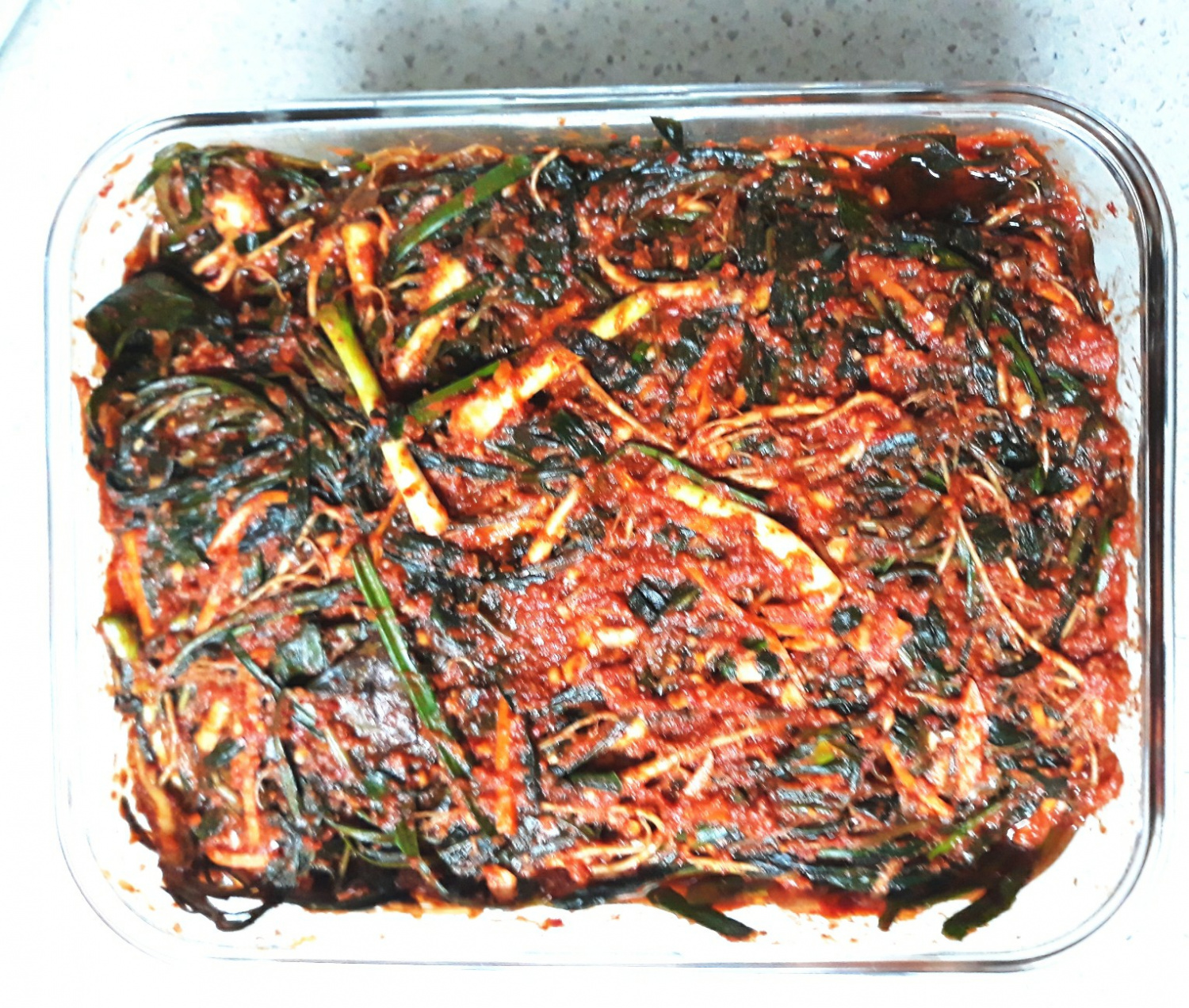Zesty and Slightly Bitter Godulbagi Kimchi
A Special Delicacy: Making Winter Godulbagi Kimchi

As the first crisp winds of early winter begin to blow, it’s the season to prepare for the cold. Today, I’ve made Godulbagi Kimchi, a favorite of my husband. It’s a kimchi that requires careful preparation, making it a bit challenging, but I took the plunge and made it with great care! He tasted it right after mixing and said it was a bit bitter, but then he devoured two bowls of rice, mixing it in and finishing every last grain.
Main Ingredients- 10 bunches Godulbagi (Korean lettuce root)
- 400g Green onions
- 1 Carrot
- 2 Onions
- 300g Radish
- 3 cups Coarse sea salt
- 10 liters Water
Seasoning Ingredients- 4 cups Red pepper flakes
- 1.5 cups Minced garlic
- 0.5 cup Minced ginger
- 200ml Anchovy sauce
- 200ml Croaker fish sauce
- 300ml Concentrated pear juice
- 3 Tbsp Salted shrimp
- 0.5 cup Tuna extract
- 4 cups Red pepper flakes
- 1.5 cups Minced garlic
- 0.5 cup Minced ginger
- 200ml Anchovy sauce
- 200ml Croaker fish sauce
- 300ml Concentrated pear juice
- 3 Tbsp Salted shrimp
- 0.5 cup Tuna extract
Cooking Instructions
Step 1
First, thoroughly wash the prepared Godulbagi under running water. Then, in a large bowl, dissolve 3 cups of coarse sea salt in 10 liters of water to make a brine. Submerge the Godulbagi in this saltwater to salt it.

Step 2
After about a day, rinse the Godulbagi multiple times to remove excess saltiness. Drain it well on a colander. If you prefer a milder bitterness, you can soak it in saltwater for up to 3 days before rinsing. This process helps to reduce the inherent bitterness, making it more palatable.

Step 3
Peel and roughly chop the 2 onions. Place them in a blender and process until finely puréed. The natural sweetness of the onions will add a wonderful depth of flavor to the kimchi.

Step 4
Peel and roughly chop the 300g of radish. Add it to the blender with the onions and process until puréed. Blended radish contributes to the refreshing taste and texture of the kimchi.

Step 5
Prepare one bowl of cooked white rice. Add it to the blender with a little water and blend until smooth. You can also use a porridge made from glutinous rice. Adding rice or glutinous rice paste helps the kimchi develop a richer flavor and a thicker brine as it ferments.

Step 6
Trim the roots off the 400g of green onions and wash them thoroughly. Cut them into 3-4 cm pieces. These will add a delightful crispness to the kimchi.

Step 7
Peel the 1 carrot and cut it into fine julienne strips. This will add color and a subtle sweetness to the kimchi.

Step 8
In a large bowl, combine 4 cups of red pepper flakes, 1.5 cups of minced garlic, 0.5 cup of minced ginger, 200ml of anchovy sauce, 200ml of croaker fish sauce, 300ml of concentrated pear juice, 3 Tbsp of salted shrimp, and 0.5 cup of tuna extract. Add the puréed onion and radish, and the blended rice (or glutinous rice paste) to the bowl. Mix everything well to create the seasoning paste. Then, add the julienned carrots and the cut green onions, and gently mix them into the paste.

Step 9
Finally, add the well-drained Godulbagi to the seasoned vegetables. Gently toss everything together, ensuring the seasoning evenly coats each piece of Godulbagi. Be careful not to overmix, as this can cause the Godulbagi to become mushy.

Step 10
Transfer the well-mixed Godulbagi kimchi into your prepared storage containers. Seal the containers tightly and store them in the refrigerator. The kimchi will continue to ferment and develop even deeper flavors over time. It’s delicious to eat fresh, but even better after a few days of fermentation.




